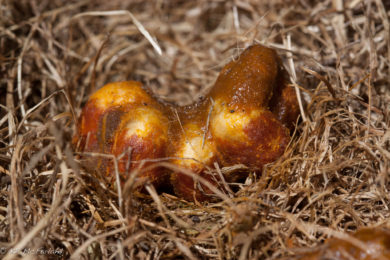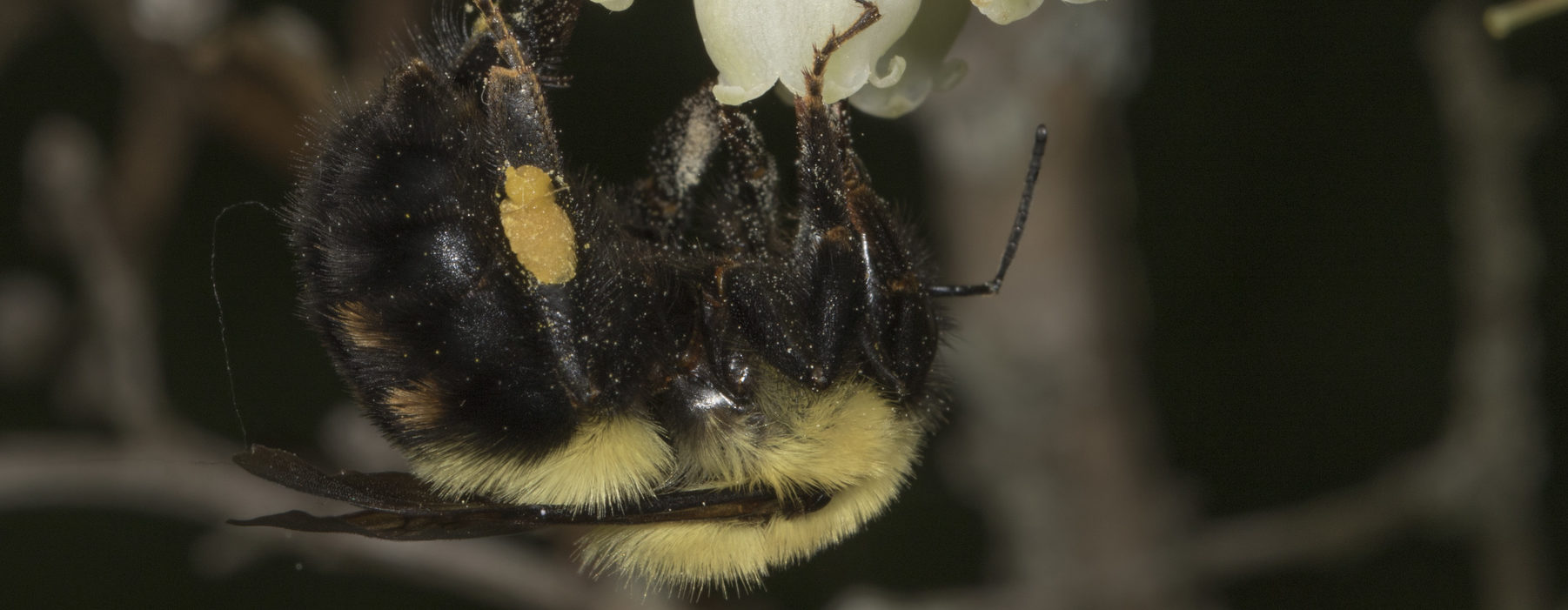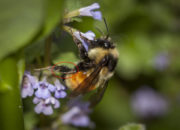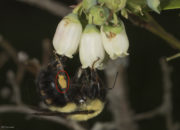Breeding codes are commonly used in the birding world to denote behavioral observations that indicate a species is breeding at a given time and place. Believe it or not, similar behaviors can bee see in the bees, with carrying food probably being the most obvious and meaningful. With your help, we are piloting a project to track bumble bee nest formation and explore its relationship with everything from crop pollination to climate change.
Background
Bumble bees are charismatic megafauna of the insect world and as such are great study organisms to help us monitor changes in the natural world. Queens of these social insects emerge from hibernation on warm days in early spring and quickly get busy trying to find a protected location to establish a nest for the summer. This behavior can be frequently observed as queens slowly cruise low over the ground and explore every nook and cranny. Once a nest site is chosen, their behavior changes and their primary motivation becomes gathering food for their offspring. This too can be readily seen – presenting as a wet glob of pollen affixed to the hind legs of a foraging bee. Queens, and later workers, use a specialized part of their hind legs (called a corbicula) to transport pollen back to their nest to feed their larva. The two photos above highlight the location of pollen (with and without). A few weeks after the first pollen is collected, the workers begin to emerge and the colony is off to the races!

A Brown-belted Bumble Bee nest © Kent Mcfarland
To better understand and track the phenology of bumble bees, we want to monitor four metrics for each species: emergence of a queens, queens collecting pollen, emergence of workers, and emergence of males.
How can you help?
We are counting on contributions from community scientists to help us track these metrics across the state and perhaps beyond. Absolutely no prior knowledge is needed, anyone can help us gather this data without leaving their house. New photo observations can be submitted to iNaturalist, but we also want help cataloging the data that is already there. By using the observation fields, we can mine the information we need from photos of Bumble Bees from past years.
The Identify tool is the quickest way to add observation fields to a number of observations. This link is a good place to start, and can be further modified with the various filters. Under Annotations -> Observation Fields type or paste the chosen field, then select yes or no. Don’t forget to click add. Below are three observation fields that we encourage people to use when appropriate.
Pollen present in corbicula or scopa – See the two photos above for examples of pollen and no pollen. Occasionally photos will be ambiguous and are best left un-annoated.
Bee caste – Only relevant for Honey Bees and Bumble Bees and most helpful for workers vs. queens. Sex is best annotated using the built in annotations. Note that workers and queens usually only differ in size, and can be challenging to separate, especially from photographs. Be conservative with this field.
Interaction -> visited flower of: – Not directly relevant to this mission, but very helpful for other, on-going projects
More information about bumble bees, including resources for species-level identification, is here.
Why does it matter?
This mission was spawned from discussion among local fruit growers in the spring of 2021, when bumble bee numbers appeared to be very low early in the season (during the beginning of the blueberry bloom). That spring, queens emerged early (late March) but many people commented on abnormally low abundance through May. Later in the season however, bumble bee numbers appeared to rebound nicely. By exploring phenology across multiple years, we hope to better understand the important drivers and the potential impacts of changes to the climate.









